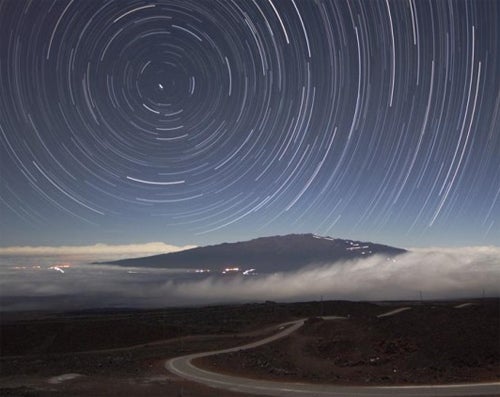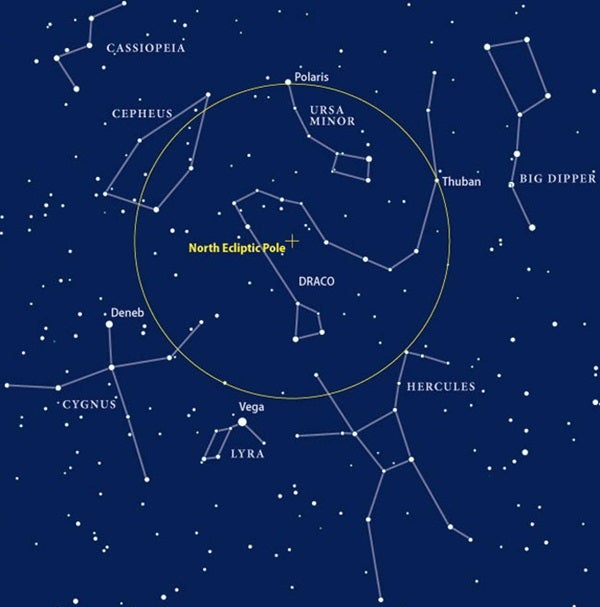| Precession on the web |
| J. Giesen’s Precession page contains Java applets that allow you to precess star positions and animate the North Celestial Pole’s motion for the next 14,000 years. |
But the North Star isn’t really moving: Earth’s rotational axis is. Like a spinning top, Earth has a slight wobble that slowly makes its spin axis sweep out an arc in the direction opposite the planet’s rotation. This motion, called precession, is a rotating object’s response to a twisting force. In the case of a top, this force is friction with the floor. For Earth, the force is the gravitational pull of the Sun and Moon on our planet’s bulging equator. Over the course of nearly 25,800 years, Earth’s spin axis — and, thus, the North Celestial Pole — traces a circle through the constellations. This circle is centered on the North Ecliptic Pole, which is the point perpendicular to Earth’s orbit around the Sun.
Two thousand years hence, the “north star” will be Alrai at the tip of Cepheus. After another 3,500 years, the North Celestial Pole will lie near Cepheus’ brightest star, Alderamin. From then on, membership in the North Star Club seems to dwindle. No really bright stars take the title until the pole moves near bright Deneb 8,000 years from now. A few thousand years later, the star Vega in Lyra will point spectacularly, if inaccurately, to true north.











